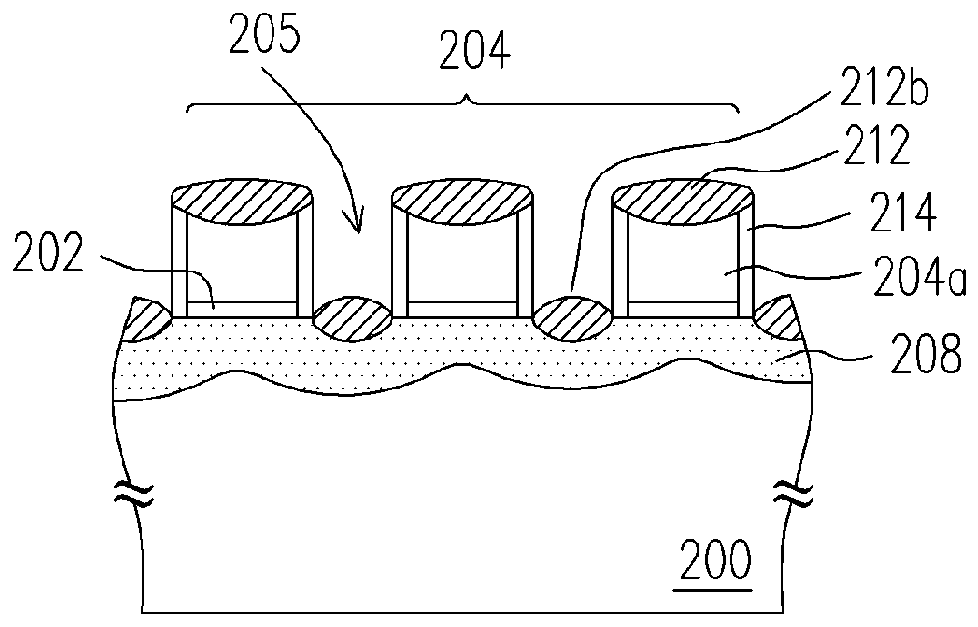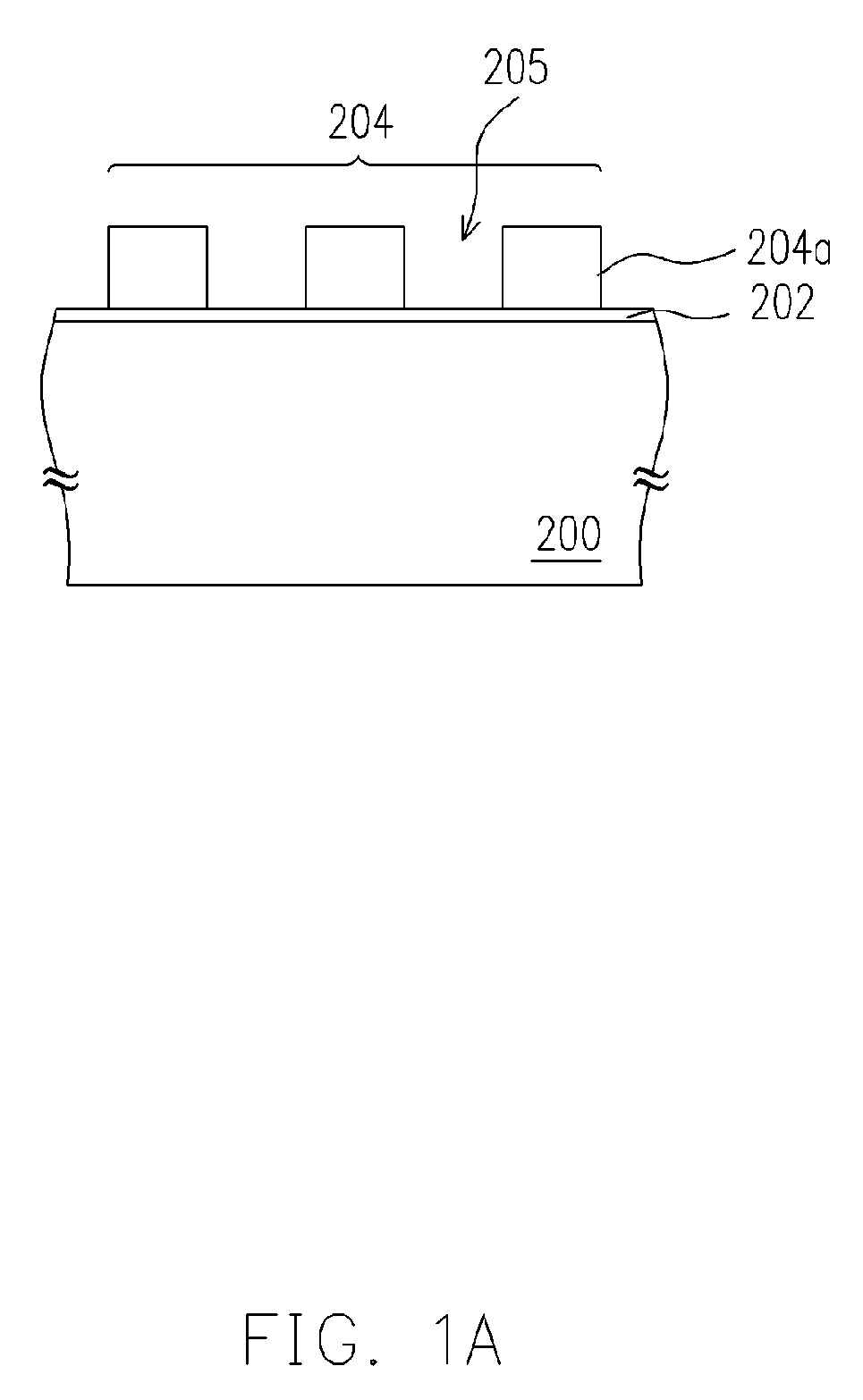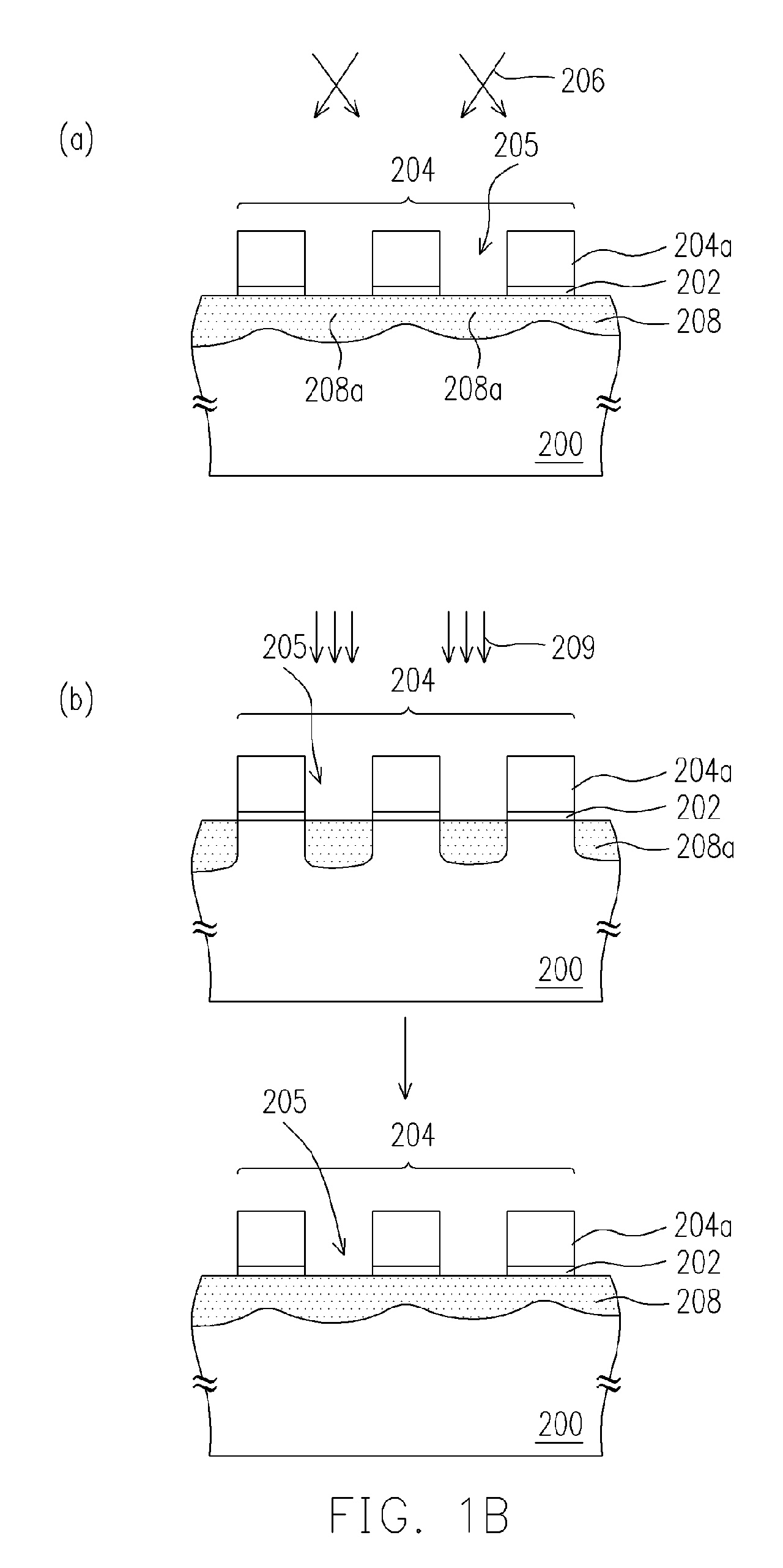Method of fabricating capacitor
a capacitor and dielectric layer technology, applied in the direction of capacitors, semiconductor devices, electrical equipment, etc., can solve the problems of reducing the integration degree of devices, reducing the economic effect of manufacture, and insufficient capacitance per unit area of mis capacitors suitable for high-voltage applications, so as to improve the quality of the capacitor dielectric layer.
- Summary
- Abstract
- Description
- Claims
- Application Information
AI Technical Summary
Benefits of technology
Problems solved by technology
Method used
Image
Examples
first embodiment
[0020]FIGS. 1A and 1B(a) / (b) illustrate a process flow of fabricating a capacitor according to the first embodiment of this invention in a cross-sectional view, wherein two different doping methods for forming the lower electrode are shown in FIG. 1B(a) and FIG. 1B(b), respectively.
[0021]Referring to FIG. 1A, a semiconductor substrate 200 is provided, which may be a single-crystal silicon substrate. A dielectric layer 202 is formed on the substrate 200, preferably together with the gate dielectric layers in the MOS area (not shown) of the same substrate 200. For example, the dielectric layer 202 can be a silicon oxide layer that is formed simultaneously with the gate oxide layers in the MOS area through thermal oxidation.
[0022]Then, an upper electrode 204 having multiple openings 205 therein is formed on the dielectric layer 202. The steps for forming the upper electrode 204 may include forming a doped polysilicon layer on the dielectric layer 202 and patterning the same with a lith...
second embodiment
[0027]FIGS. 2A–2B illustrate a latter part of a process flow of fabricating a capacitor according to the second embodiment of this invention in a cross-sectional view. The former part of the process flow is described in the first embodiment, while the step of FIG. 2A is subsequent to the step of FIG. 1B and the same elements are labeled with the same reference numbers.
[0028]Referring to FIG. 2A, a spacer 210 is formed on the sidewall of each opening 205 in the upper electrode 204. The spacers 210 may be formed simultaneously with the spacers on the sidewalls of the gates in a MOS area (not shown) on the same substrate 200. The spacers 210 are formed by, for example, forming a conformal insulating layer (not shown) over the substrate 200 and then anisotropically etching the same to remove portions thereof. The material of the insulating layer may be silicon nitride, and the method for forming the same is chemical vapor deposition (CVD), for example.
[0029]Referring to FIG. 2B, a self-...
third embodiment
[0031]FIGS. 3A–3B illustrate a latter part of a process flow of fabricating a capacitor according to the third embodiment of this invention in a cross-sectional view. The former part of the process flow is described in the first embodiment, while the step of FIG. 3A is subsequent to the step of FIG. 1B and the same elements are labeled with the same reference numbers.
[0032]Referring to FIG. 3A, after the lower electrode 208 is formed, a liner layer 214 is formed on the sidewall of each opening 205 in the upper electrode 204, and then a spacer 210 is formed on each liner layer 214. The liner layer 214 may include silicon oxide and may be formed with thermal oxidation, for example. The forming method and the material of the spacer 210 may be the same as those in the second embodiment.
[0033]Referring to FIG. 3B, the spacers 210 are removed with, for example, isotropic etching, leaving the liner layers 214 on the sidewalls of the openings 205. It is particularly noted that the liner lay...
PUM
| Property | Measurement | Unit |
|---|---|---|
| conductive | aaaaa | aaaaa |
| refractory | aaaaa | aaaaa |
| electrical resistance | aaaaa | aaaaa |
Abstract
Description
Claims
Application Information
 Login to View More
Login to View More - R&D
- Intellectual Property
- Life Sciences
- Materials
- Tech Scout
- Unparalleled Data Quality
- Higher Quality Content
- 60% Fewer Hallucinations
Browse by: Latest US Patents, China's latest patents, Technical Efficacy Thesaurus, Application Domain, Technology Topic, Popular Technical Reports.
© 2025 PatSnap. All rights reserved.Legal|Privacy policy|Modern Slavery Act Transparency Statement|Sitemap|About US| Contact US: help@patsnap.com



